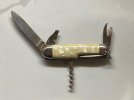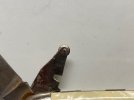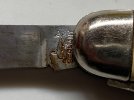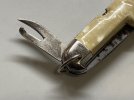LLRJ17
Gold Member
- Joined
- Jan 16, 2022
- Messages
- 697
I came across this multi-tool recently and am not sure of its design and intended use. I believe it could possibly be from the '40's. The only marking is "Germany" and the small logo stamped on the blade.
Wondering if it may be a leather working tool given the small rolling tool? There is an awl that I didn't want to force open as it is bent and applies pressure to the scale when trying to open.
Any info would be greatly appreciated.
Thanks in Advance!
Lee




Wondering if it may be a leather working tool given the small rolling tool? There is an awl that I didn't want to force open as it is bent and applies pressure to the scale when trying to open.
Any info would be greatly appreciated.
Thanks in Advance!
Lee






